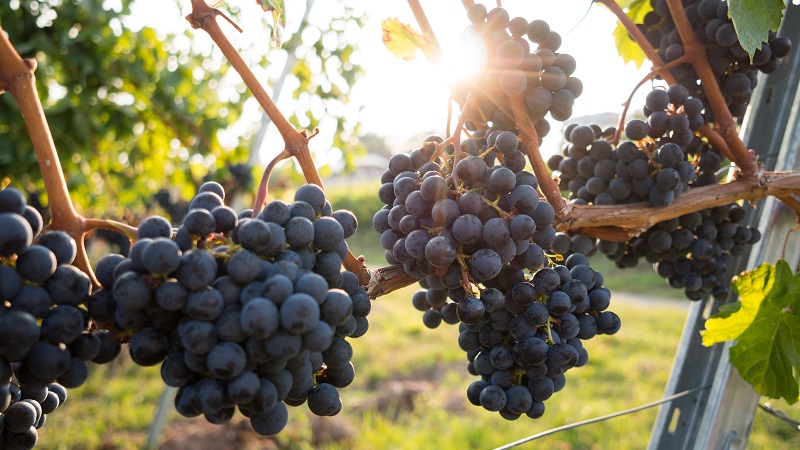Future Of Extension Threatened
It’s no secret that agriculture has had a diminishing profile in the U.S. over the past several decades. Ironically, it’s partly the farmer’s fault, as growers have become so efficient that we only need about 1% to 2% of our population to be directly involved in agriculture to provide enough food. A consequence of that is that the role of Extension, which not too many years ago was hugely prominent across America, has likewise diminished.
But Extension’s future, both short- and long-term, would seem to be particularly dim today. At statehouses across the country, our elected representatives are feverishly figuring how to cut billions of dollars worth of services in the wake of the housing meltdown. American/Western Fruit Grower interviewed more than a dozen people involved in Extension in the country’s prime fruit growing areas to get a better handle on the state of Extension and its future. Here is a sampling of what they had to say.
• It’s important to realize that no two states are quite the same. This is partly a function of how Extension has traditionally been viewed. In the Northeast, where farms are generally smaller and — outside of New York — there are few private consultants, Extension has retained much of its vitality. But in the West and the Southeast, there has been a trend toward regionalization, and the good old days are long gone. “With fewer county agents, the day that an agent would drop by their farm once a week? Those days are gone,” says Desmond Layne, a Clemson University associate professor of pomology and Extension fruit specialist. “We just don’t have the ability to make house calls anymore.”
Layne, who also writes a column for American/Western Fruit Grower, says that they have to make do with fewer people and limited travel budgets. For example, he has a state-supplied pickup truck, but he has to pay for gas out of his own pocket.
• One of Extension’s best attributes is that information is very much localized, which is critical for fruit growers. That makes looming budget cuts all the more troubling, says Maxwell Norton, a University of California (UC) Cooperative Extension adviser in Merced County. “When you consider all the new pests like European grapevine moth, brown marmorated stink bug, light brown apple moth, and spotted-winged drosophila, agriculture has never had a greater need for localized research and technical assistance,” he says. Indeed, notes Steven A. Hoying, Senior Extension Associate, with Cornell University’s Dept. of Horticulture, USDA is relying on Extension to be the chief information provider on the brown marmorated stink bug, which wreaked havoc in the Atlantic states.
Not Just For Growers
• Extension really does serve more than just that 1% or 2% of the population that is directly involved in production agriculture. This is a much more far-reaching, important issue, says Elizabeth Mitcham, a UC-Davis postharvest Extension specialist. Having viable agriculture in the U.S. is really important to national security, says Mitcham, who also writes a column for American/Western Fruit Grower. “Otherwise we’d be beholden to (food) suppliers,” she says. “Right now we’re beholden to other countries for oil. How would we feel if it was food that we needed?”
• Extension doesn’t even necessarily do what growers want, says Tim Smith, a Washington State University Extension tree fruit specialist, so much as help growers do what the general public wants them to do. “We could still be using harsh old chemicals; that would be cheap and easy,” says Smith, who serves on American/Western Fruit Grower’s editorial advisory board. “The public doesn’t want us to do that, so we need to do research and then we need to teach growers to use newer, softer chemicals, and we’ve done that.”
• Many states have gone or are going to more of a program or team approach in which issues are targeted at more of a macro level, de-emphasizing the old, manpower-heavy county-by-county approach, says Tara Baugher, Pennsylvania State University Extension tree fruit educator. That approach not only saves money, but might be attractive to the industry. “Members of our state horticultural association and marketing boards are discussing innovative ways to increase funding from industry,” she says. “They also have seen the value of multi-state and multi-disciplinary projects supported by USDA Specialty Crop Research Initiative grants, and are working with the U.S. Apple Association and others to voice the need for continuation in the next Farm Bill.”
• Many Extension agents are using social media to get information out economically, says Mark Longstroth, a Michigan State University Extension educator. “I thought ‘The day I Tweet that there’s a storm coming and you need to get a fungicide on is the day I quit,’ but now I’m Tweeting and I’m still here,” he says, adding that he still does farm visits and hopes to keep doing them. “But instead of visiting numerous farms, if I went to a few and saw fire blight, I will do an eMail blast, or a Tweet with where the information is posted. Some growers, you get as much or more information from them as you give in a farm visit.”









